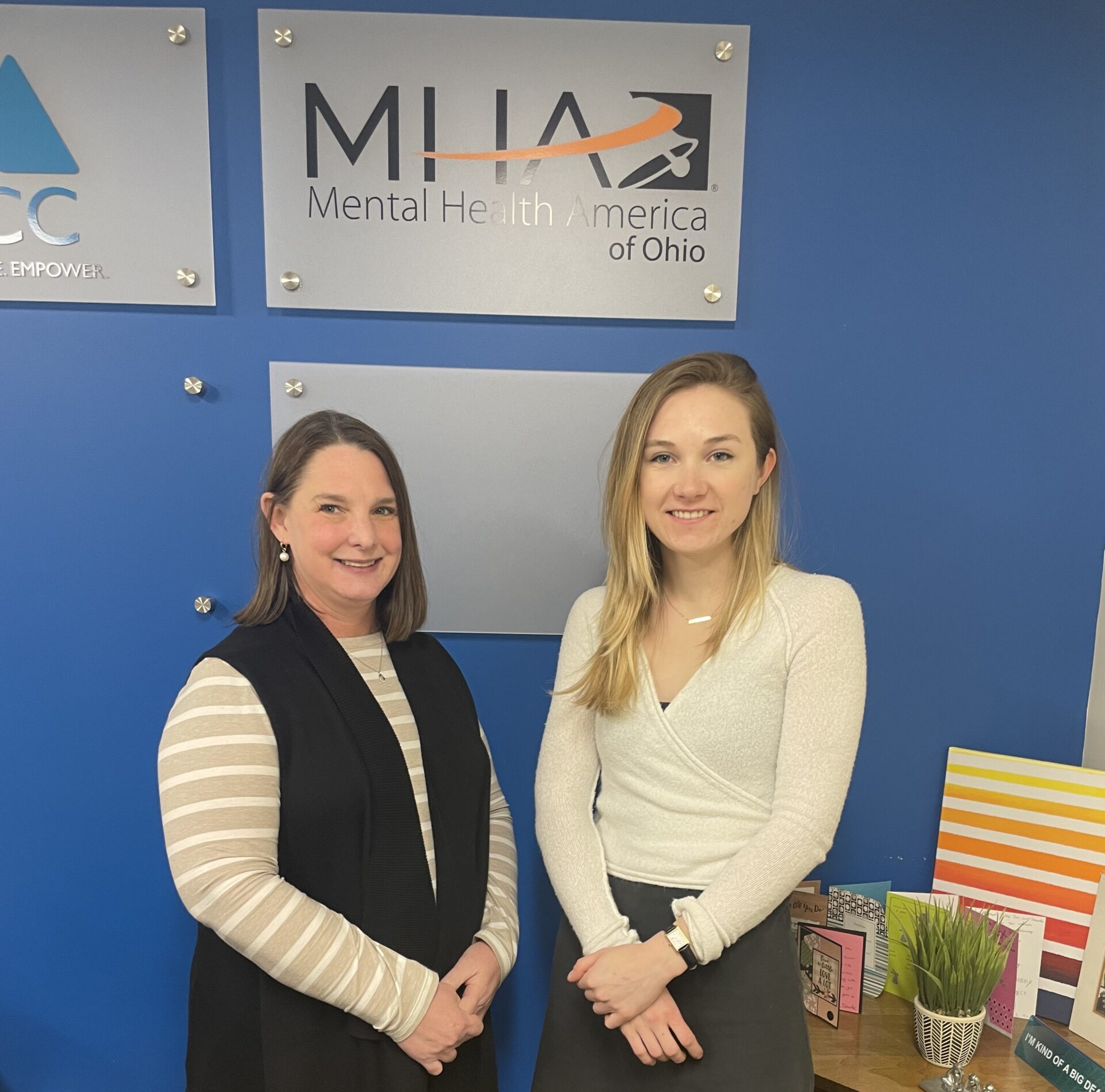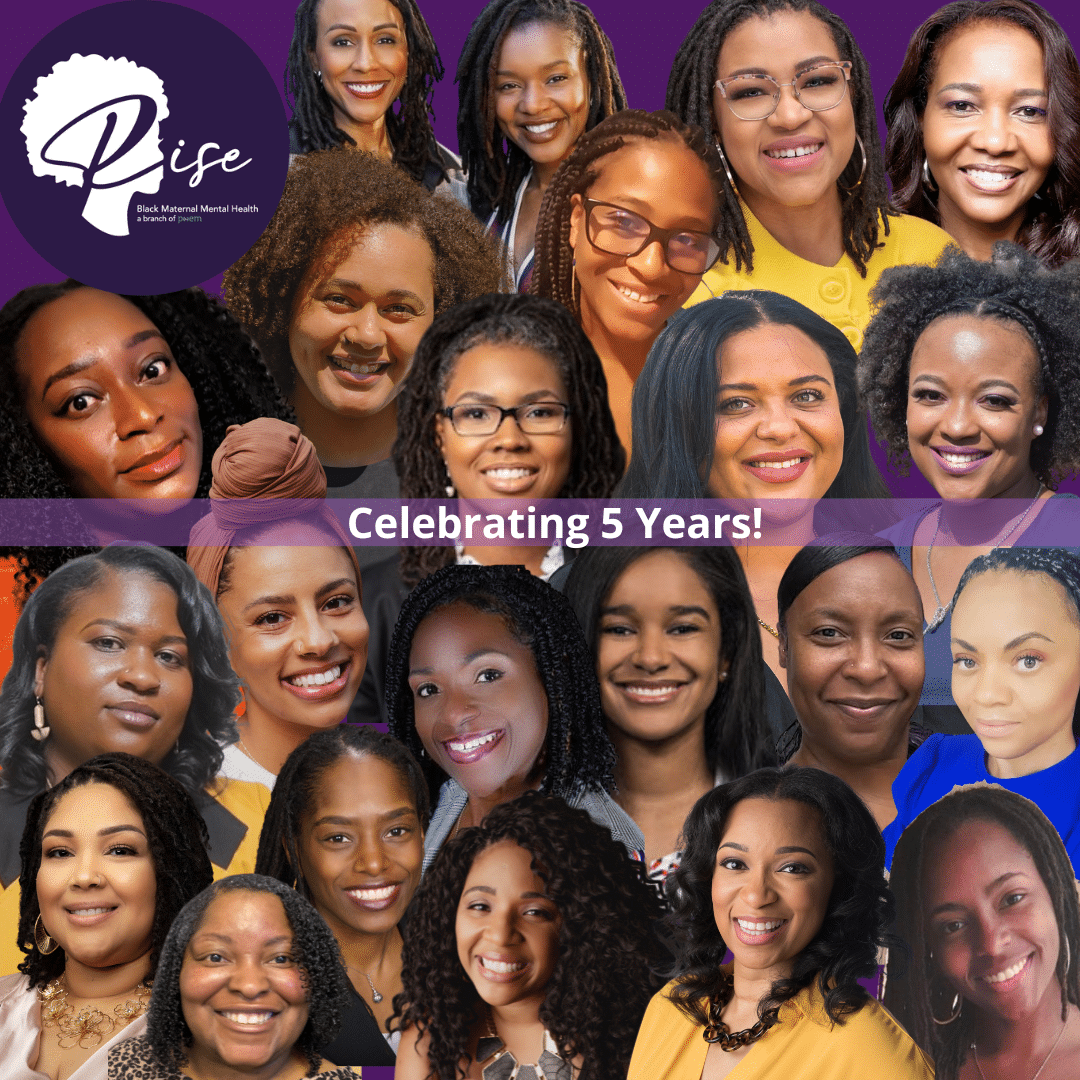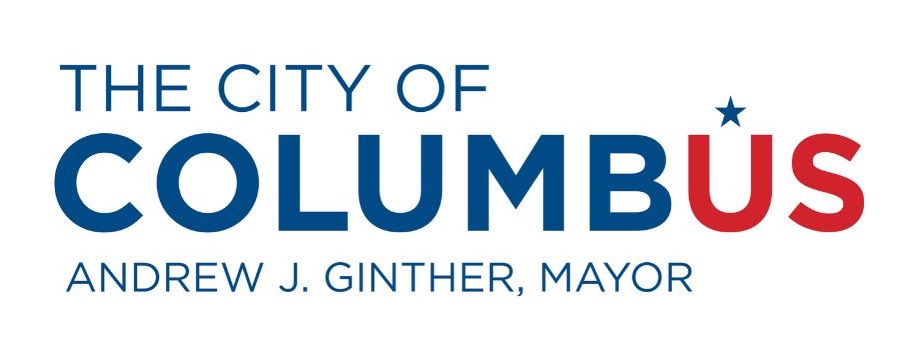Humans are hardwired for connection, and that connection is not exclusive to other humans; it includes all living things. Spending time with animals can be a powerful exercise in self-care and can have a profound impact on recovery from mental illness, trauma, and substance use disorders.
MHAOhio’s Statewide Mental Health First Aid Program Manager, Bailey Fullwiler, MSSA, LSW, explains that there is growing appreciation for animal-assisted interventions, which is any approach that incorporates the human-animal bond into the therapeutic setting.
“Some therapists have their own pets that are certified as service or therapy animals that can be integrated into therapy sessions,” she says. “And some therapists have entire practices set up on animal-assisted interventions. The most basic approach would be as simple as having the animal present in the therapeutic setting.”
There are also therapeutic approaches like the Eagala model, which incorporates horses as equal participants in therapeutic sessions, in which you’re interacting with or in the presence of a specific species or a particular animal. There’s a wide scope of research on how people benefit from connection with animals, even just petting an animal releases dopamine, and other feel-good hormones for humans. In turn, the animal receives a benefit, and together you can learn to co-regulate.
Bailey explains that part of healing and establishing resilience is feeling that you can contribute positively to other humans or other living things.
“When you feel like an animal is experiencing stress or anxiety or it needs care, being the one to provide that care in partnership with the animal builds resilience. You’re positively contributing to that relationship, and that boosts your self-esteem and builds up your social capital.”
Animals can be great teachers for humans, particularly because they can help us stay in the present moment. If you’re struggling with fixation on the future, you might have anxious or nervous thoughts. If you’re in a depressive state, you might have a lot of guilt, shame, and challenges with the past. If you have trauma, you may also be very fixated on one moment or experience.
As you create a relationship with an animal, you’re learning to communicate with them and vice versa. They’re learning language from you to know if you want to be interacted with, what form of interaction you want, and how you communicate your needs. Animals learn how to communicate with you as well. If they want to go outside, or if they no longer want touch or interaction, they can model healthy boundaries and teach us how to ask for what we need.
“There’s a lot of empowerment, connection, and beauty in being able to learn how to read an animal’s body language and emotions, and see how they become more comfortable with you.”
You do not have to have a pet to experience the human-animal bond. There are many ways to include animals in your life, whether through volunteering at a shelter or farm, pet sitting, or working with them in a professional capacity.
Bailey has experienced the benefits of animal-assisted intervention firsthand. She shares that she worked with a therapist who had a dog and potbelly pig present during her sessions. Her therapist also connected her with PBJ Connections, where she volunteered regularly to take care of the animal residents – horses, pigs, and donkeys.
“The human-animal connection has given a lot of purpose to my life,” she says. “I was navigating life after sexual trauma and working through a diagnosis of major depressive disorder. So I had a lot of fixation on the past – experiences with flashbacks, night terrors, and other things that prevented me from being present. Working with the donkeys and the other animals at the equine therapy barn really demanded that I was fully present and paying attention for my safety and their safety.”
She says that visiting the farm week after week was a great exercise in creating healthy boundaries and relieved her symptoms with depression and PTSD in ways that she might not have been able to just with humans alone.
“It can be easier to practice communication skills with another living thing that’s not a human who might have different expectations of you. You’re not trying to figure out what to say next in a conversation. With animals, you’re talking with your body and your movements, so you can focus more fully on that interaction as opposed to trying to figure out how to put things into words.”
Animals can teach us valuable lessons that we can carry with us through life. If you’re interested in exploring animals in your therapeutic setting, you can begin by asking a counselor about animal-assisted options through them or another provider. You can also learn more through the resources shared below:
Check out our social media this week to see photos of our staff and their animals, and share your own. Here’s a sneak peek of some of our feathered and furry friends!













